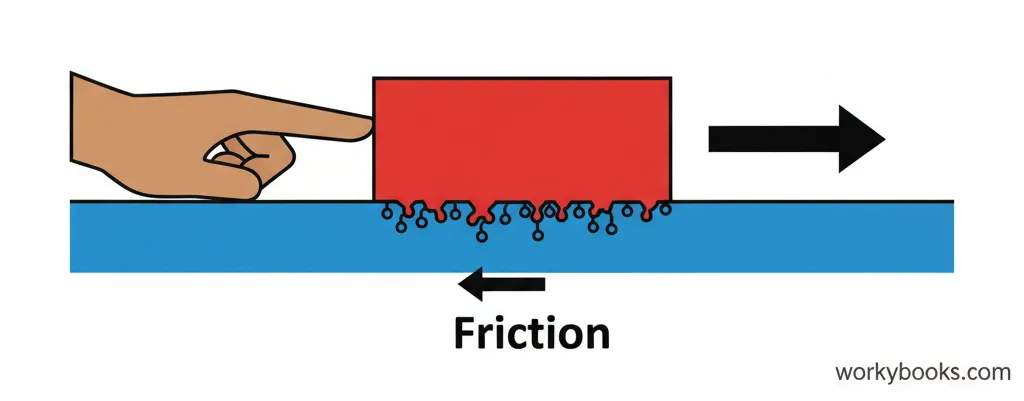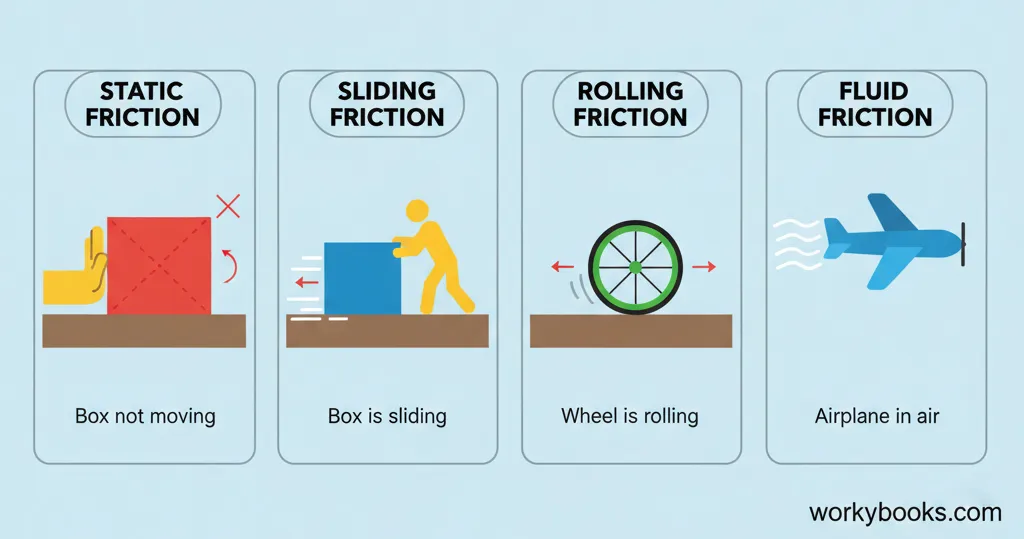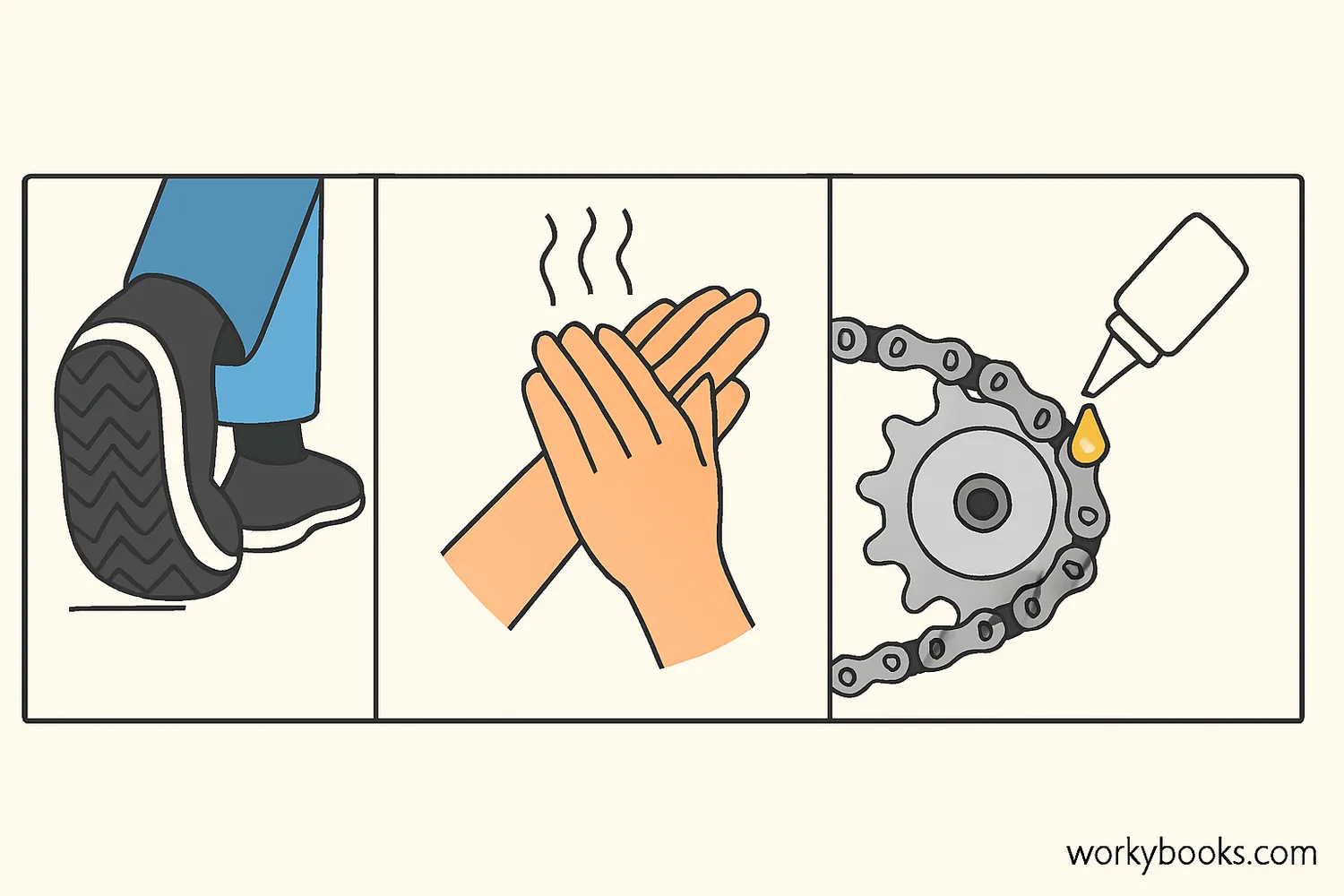Friction - Definition, Facts, Example, Quiz, Trivia
Discover the force that makes movement possible and affects everything we do!
What is Friction?

Friction is a force that happens when two surfaces rub against each other. It's what makes it possible to walk without slipping, allows cars to grip the road, and lets you hold a pencil without it sliding out of your hand.
Think of friction as the "grippy" force that works against motion. When you try to push a heavy box across the floor, friction is what makes it hard to move. Without friction, we would slide around like we were on ice all the time!
Science Fact!
Friction isn't always a bad thing! Without friction, we couldn't walk, cars couldn't move, and even simple tasks like writing would be impossible.
Types of Friction

There are four main types of friction that affect how objects move. Each type works in different situations:
Static Friction
The friction that acts on objects when they are not moving. It's what keeps objects in place.
Example: A heavy box sitting on the floor that's hard to push
Sliding Friction
Occurs when two surfaces slide against each other. Also called kinetic friction.
Example: Sliding down a slide or pushing a book across a table
Rolling Friction
The friction that occurs when an object rolls over a surface.
Example: A ball rolling on the ground or car wheels on pavement
Fluid Friction
The friction that occurs when an object moves through a fluid (liquid or gas).
Example: Swimming through water or a plane flying through air
Static friction is usually stronger than sliding friction, which is why it's harder to start moving an object than to keep it moving. Rolling friction is usually weaker than sliding friction, which is why wheels make it easier to move heavy objects.
Friction in Everyday Life

Friction plays an important role in many everyday activities. Sometimes we want more friction, and sometimes we want less:
Helpful Friction
Shoe soles gripping the floor, car tires on the road, brakes stopping a bicycle
Friction Creates Heat
Rubbing hands together to warm them, matches lighting from friction
Reducing Friction
Using oil in engines, wax on skis, ball bearings in wheels
Engineers carefully consider friction when designing everything from shoes to spacecraft. They might add textures to increase friction (like on stair treads) or use smooth materials and lubricants to reduce friction (like in engines).
Try This!
Rub your hands together quickly. Feel how they get warmer? That's friction converting motion energy into heat energy!
Friction Quiz
Test your friction knowledge with this quiz! Answer all 5 questions to see how much you've learned.
Frequently Asked Questions
Here are answers to some common questions about friction:
Science Trivia
Discover some amazing facts about friction!
Friction Creates Fire
Rubbing two sticks together creates enough friction to start a fire! This method has been used for thousands of years. The heat generated by friction can reach temperatures high enough to ignite dry tinder.
Gecko Feet Magic
Geckos can walk on ceilings thanks to microscopic hairs on their feet that create friction through van der Waals forces. This allows them to stick to surfaces without any liquid adhesive.
Curling Science
In the sport of curling, players sweep the ice to reduce friction, helping the stone travel farther and straighter. The sweeping slightly melts the ice surface, creating a thin layer of water that reduces friction.
Maglev Trains
Maglev trains use magnetic levitation to float above the track, eliminating rolling friction. This allows them to reach speeds over 300 mph with very little energy loss to friction.


